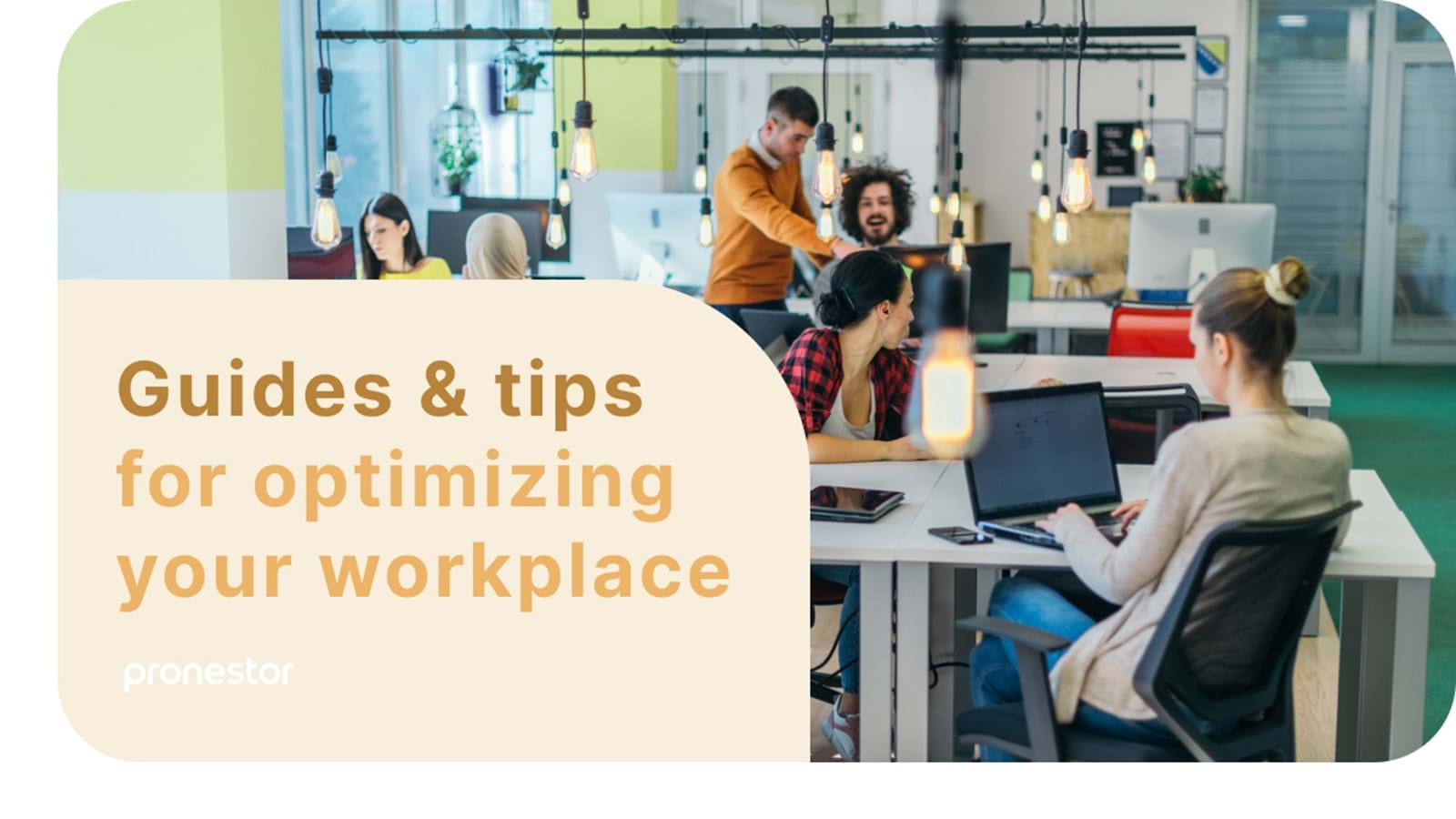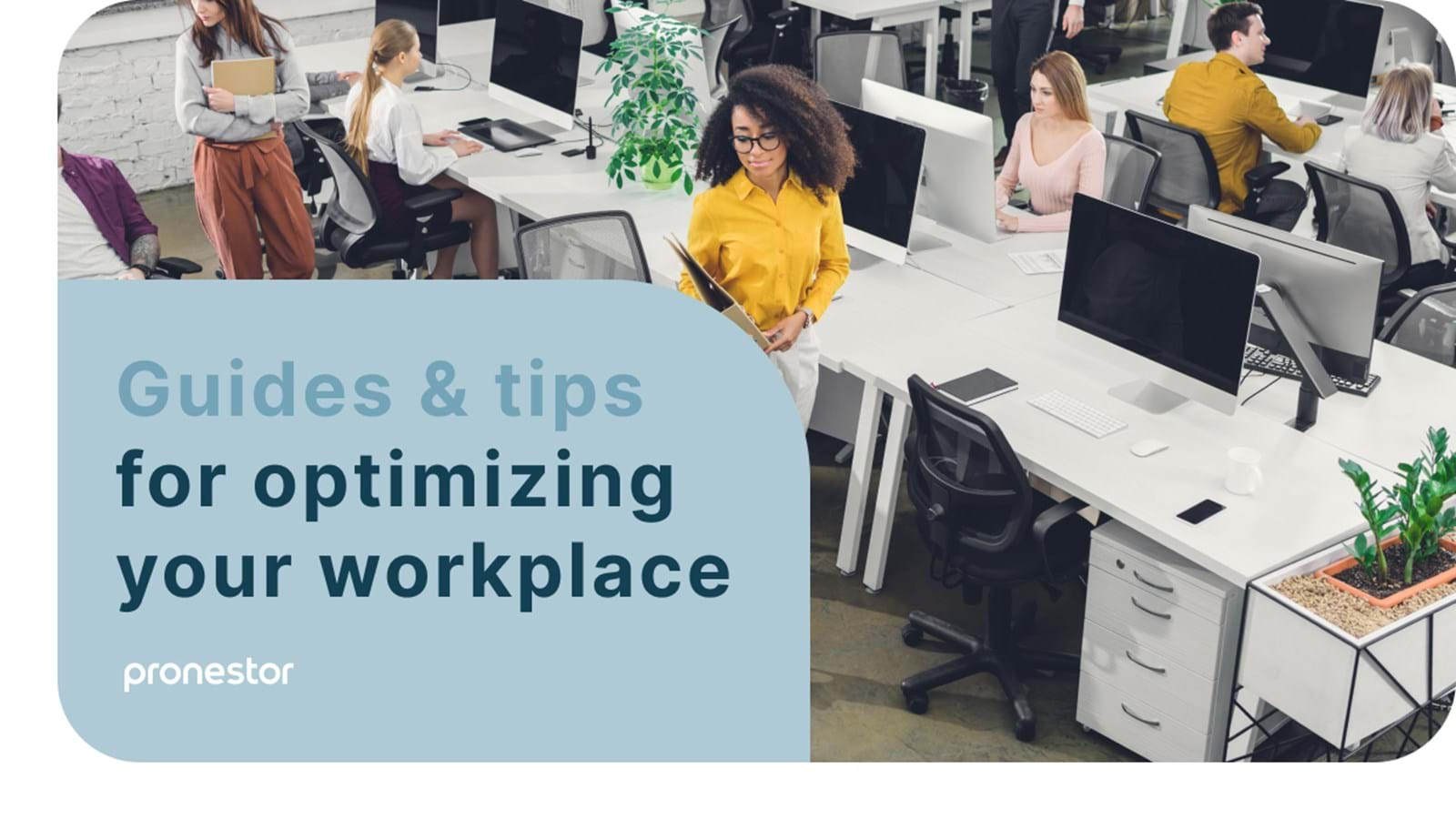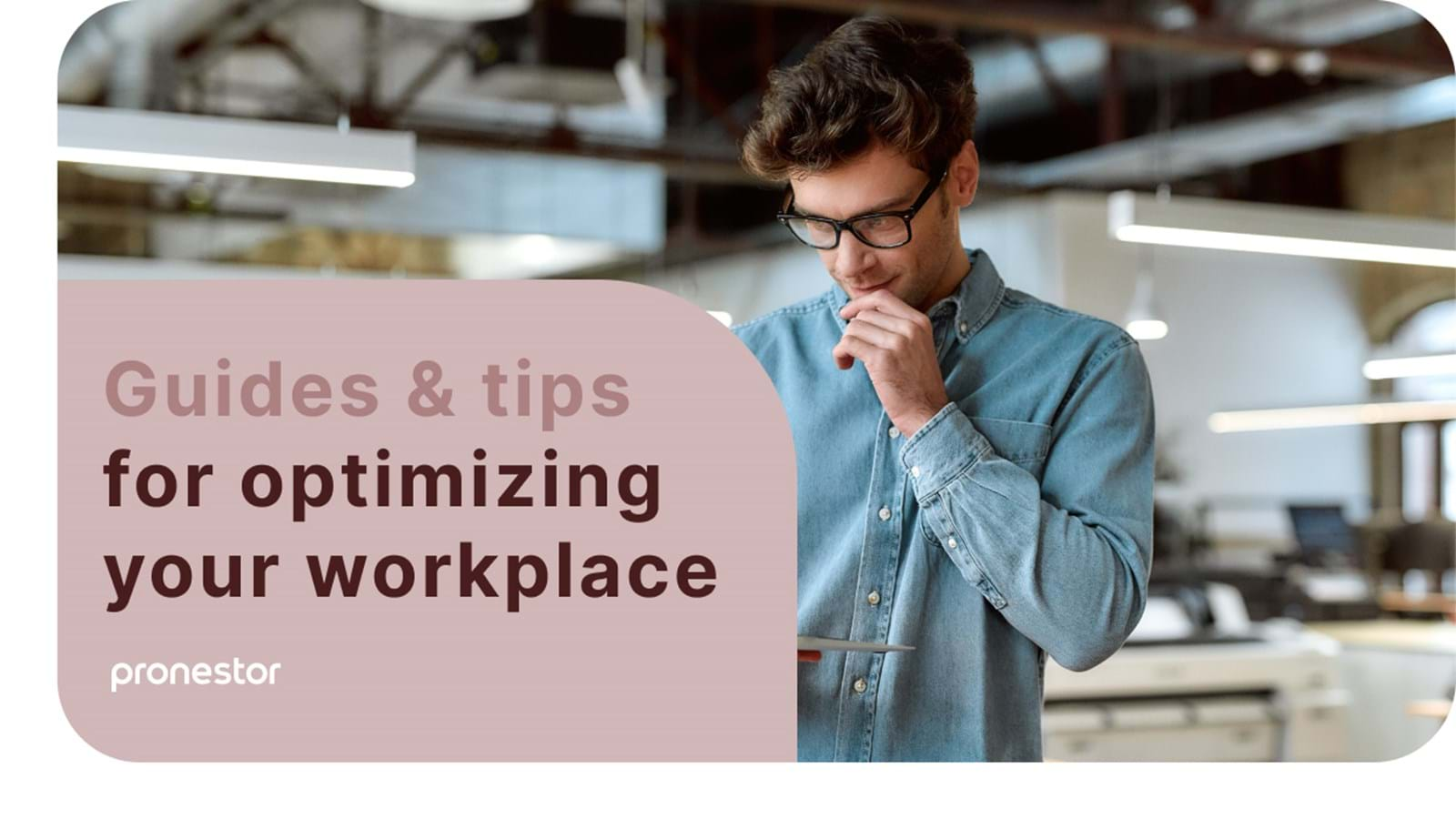February 08, 2022
— Kasper Ullits (CPO/Founder)
Is your office providing a good employee experience?
The role of the office is changing and with it, the impact it has on your employee experience. But how can you make sure that impact is positive?

The role of the office is changing. From being a central part of the employee experience, a place where we spend 40 hours a week, it is becoming a place where we go to meet up, collaborate, and socialize.
That doesn’t mean the office is becoming any less important. It just means we need to rethink the role of the office, especially when it comes to employee experience.
But before we dive into how you can make your office a place where employees want to go, let us look at employee experience in a more general sense – what is it and why should you care?
What is employee experience?
The term employee experience describes the experience an employee has within their entire tenure in an organization. It includes being hired, the onboarding process, the day-to-day work, the office buildings, relationships with coworkers and management, and even the time after an employee resigns.
Why employee experience is important
From an organizational perspective, there are two primary reasons why employee experience is important. The first reason is recruitment and the second is retention. But the employee experience also affects the organizational engagement and may even have a measurable effect on your bottom line.
Why you should care about employee engagement
Employee engagement is a term given to the state of a relationship between employee and organization, and while it can be difficult to measure, it is highly related to an organization’s turnover as well as how much effort an organization’s employees put into their work.
Employee experience affects retention
The way employees experience an organization influences retention. A study found that approximately 10% of people left a position within just six months of starting. *
This shows how important the hiring process and onboarding is when it comes to employee experience and subsequently to retention.
Employee experience affects recruiting
While it may be obvious that a poor employee experience would lead to a high turnover, it can even lead to difficulty recruiting new talent. A report by Glassdoor found that 86% of job seekers research an organization’s reviews and ratings online before deciding to send their application. *
In short, whenever you post a job, you aren’t the only one who does the reviewing, your organization is being reviewed too.

What is a good employee experience?
There are many different contributing factors to creating a good culture and subsequently a good employee experience, but the primary contributors can be divided into the following categories:
- Flexibility
- Technology
- Communication and transparency
- Support
- Office space
Employees want flexibility
Over the course of the pandemic, employees have been accustomed to more flexibility than before the pandemic, and with lessened restrictions in many countries, retaining that flexibility is high on the list of what employees want.
35% of employees say they would be more likely to look for a new job if they were forced to work in an office full-time. *
Employees want technology
Technology is a necessity in any modern workplace, especially if your organization has flexibility or hybridity as part of the work model. Because of that, it’s important to make sure employees have the tools they need to carry out their job.
30% of employees say that their company’s technology exceeds or greatly exceeds their expectations. *
Employees want communication and transparency
Open communication and transparency, especially when it comes to organizational decisions, is extremely important. Employees need to know both what is going on and why. This is especially important if you are organizing your organization’s return to the office.
34% of employees do not agree that there is open and honest communication at their company. *
Employees need support
Especially when it comes to organizational change, it’s important that employees feel supported by management, coworkers, and the policies of the organization itself.
68% of employees feel supported in their efforts to adapt to organizational changes. *
Employees need an office
The office should not be a place where employees are required to go. It should be a place they want to come. This is especially true after the emergence of remote and hybrid work.
37% of employees do not agree that their organization’s office is an enjoyable place to be. *
How to improve your organization’s employee experience
The pandemic and the emergence of remote and hybrid work has changed the boundaries between organization and employee to a degree where the well-being and resiliency of many employees is suffering.
But how do we improve the overall employee experience when 29% of employees won’t always take a sick day and 20% of employees often worry about work problems? *

Walk the talk
If you want your organization to be a place where employees value their own well-being, you need to set an example from the top down. Leaders need to be seen working reasonable hours, taking personal time, and treating their mental and physical health as a priority. If they don’t, employees won’t either.

Talk to your people
Mental health has been a taboo in workplaces and in society in general for years. Having management, HR and team leads talk openly about mental health helps break the stigma, allowing for a better and more healthy employee experience.

Encourage the creation of a healthy culture
Ultimately, it’s the employees who dictate the culture of your organization by setting boundaries, communicating their issues, and taking ownership of their free time, but you need to build an environment that allows for that, by creating the structure around how, where and when work happens.
Designing your office for good employee experience
With the change in how employees are going to utilize the office, most organizations need to ask themselves how their office space can support a great employee experience in the era of flexible work.
Listen to your employees
The most important piece of advice when it comes to designing your organization’s office space in a way that supports the overall employee experience, is to listen to your employees.
So, before you do anything else, you should investigate what your employees need the office to be capable of.
If employees frequently voice that they need a place where they can answer the phone or that they lack small meeting rooms for 1-on-1’s, then that’s what you should focus on.
Policies and transparency
After you have found out what your employees need from the office, you need to make sure that everyone (management and workers alike) knows what the purpose of the office is.
If employees are required to come into the office a minimum of two days a week or wear a full suit when they are at work, you need to state it clearly, so everyone knows.
Confusion about simple things, such as how to use the office and dress codes is a surefire way to weaken the employee experience.
Navigation
Another important part of optimizing the office experience is to make sure that employees can find their way around when they are at the office. This may sound simple, but it rarely is.
When measuring employee engagement, one of the things that are often evaluated is if employees feel that they have the best possible tools to make their day productive.
Having to search for available meeting rooms by going to each separate room and opening the door does not feel productive. Neither does taking multiple wrong turns before being able to locate the correct work area.
Implementing things such as floor maps, navigational prompts which point employees in the right direction and meeting room display screens is a good way to lessen the time spent searching for the correct resources and can in turn increase employee engagement.
Collaboration space
An Accenture survey from May 2021 revealed that more than two thirds of employees want more opportunities to collaborate with their colleagues face-to-face. *
And your office can provide that opportunity in the form of space.
Whether it’s meeting rooms or dedicated collaboration areas you need a way to make it easy for employees to take advantage of those resources, which is where things such as scheduling software and meeting room booking displays can fill a gap.
Leisure and lounging
You have probably heard people say that installing a ping-pong table in the break room isn’t the same as having a good company culture, and that is entirely true.
But if you already have a ping pong table in the break room, and your employees want to spend time beating their colleagues at ping pong, that’s usually an indicator that your culture is in a good place.
No matter how you feel about ping pong tables in the break room, you need to make sure that your office is equipped to handle leisure and breaks as well as collaboration and productivity.
What that looks like will depend on your employees and can’t necessarily be copied from one organization to another.
Designing a good employee experience for remote workers
Optimizing employee experience for a workforce that utilizes the office is one thing but making sure that employees who rarely or never use the office is a completely different challenge.
Creating a good remote experience should first and foremost address the challenges of working remote, and especially if it comes to a hybrid workforce, it should address the challenges of having part of the workforce be in the office and another working from home.
Trust is important and so is aligning expectations
When an employee is working from home, it can be easy to start questioning whether they are working the full number of hours stated in their contract.
While mistrust is a surefire way to ruin the employee experience, trust without clearly aligned expectations can be equally harmful. Surveys show that employees who work from home tend to work more hours, and even let their work spill over into nights and weekends. *
Because of that it’s important, not only that employees feel trusted, but that there are clearly aligned expectations in place when it comes to their work.
Otherwise you will end up with employees working 10+ hours a day, and while that may sound like a productivity hack, it will lead to burnout and a poor employee experience.
Working remotely can disconnect employees from the workplace
Even if it is what the individual employee prefers, working from home full time, or even just some of the time, can remove the social aspect of work.
Things such as coffee breaks, lunches and office banter are an important part of creating a sense of community. Creating a good remote employee experience should address this.
Whether what you should implement is digital coffee breaks, meeting up for Friday drinks, or daily team meetings in cyberspace, will depend on your employees. So once again, ask.
Working remote can cause opportunity isolation
Remote work does not only create social isolation, in many cases it also causes opportunity isolation. When new projects are launched or it’s time for bonuses and promotions, it’s easier to remember those who are in the office on a regular basis than those who spend more time working from home.
A way to help solve this is to make sure managers schedule regular success reviews with their employees going over their successes and telling employees that they are doing well. For this to work, it is important to understand that these aren’t performance reviews, but solely focuses on the successes of an employee.
How to measure if your office provides a good employee experience
Having taken steps to improve your employee experience, there’s a good chance you will want to measure if your improvements work. Overall, there are two different ways to easily gauge how your employee experience is:
- Anonymous employee experience surveys
- Data from your workplace management software
Employee experience surveys
The easiest way to figure out how employees experience the workplace is to ask. Simple as that.
Using annual surveys will let employees weigh in on how they use the workplace, which elements are important, what they think is missing and their overall engagement.
It will provide you with a lot of information, and the ability to anonymously voice concerns can provide an outlet that can further improve their employee experience.
Look at workplace data
While surveys will be based on the perception of your employees, data on workplace usage is an objective source of information.
Most modern workplace management software can provide insight into room reservations, space utilization, the rate of meeting cancellations, how often employees work from home versus the office, and it can all help give you a better picture of the workplace.

Should you hire an employee experience manager?
If there is one thing the past couple of years have shown us, it is that getting the employee experience right requires constant optimization. No matter what you decide to do it is likely to need changing in the future.
This is one of the reasons why more and more organizations hire employee experience managers, simply to bridge the gap between senior management and front-line employees.
Whether you need an employee experience manager will depend on the size of your organization. The larger an organization the bigger the gap between management and employees, and the greater the need for an experience manager.
Resources
https://www.cultureamp.com/blog/cost-of-employee-turnover
https://www.glassdoor.com/employers/resources/hr-and-recruiting-stats/?utm_referrer=https://www.google.com/
https://www.qualtrics.com/au/ebooks-guides/employee-experience-trends-2022/
https://newsroom.accenture.com/news/a-work-anywhere-workplace-is-what-employees-actually-want-today-according-to-new-report-by-accenture.htm
https://social.hays.com/2019/05/13/how-loneliness-killing-productivity-business/
https://www.shrm.org/hr-today/news/hr-news/pages/remote-employees-are-working-longer-than-before.aspx
Read more Guides & Tips

Try Pronestor Workspace for free
You can now access our desk booking app Pronestor Workspace completely free of charge. The trial lasts for 14 days, which gives you plenty of time to see how it will benefit you, when you and your team needs to schedule working from home or the office.


